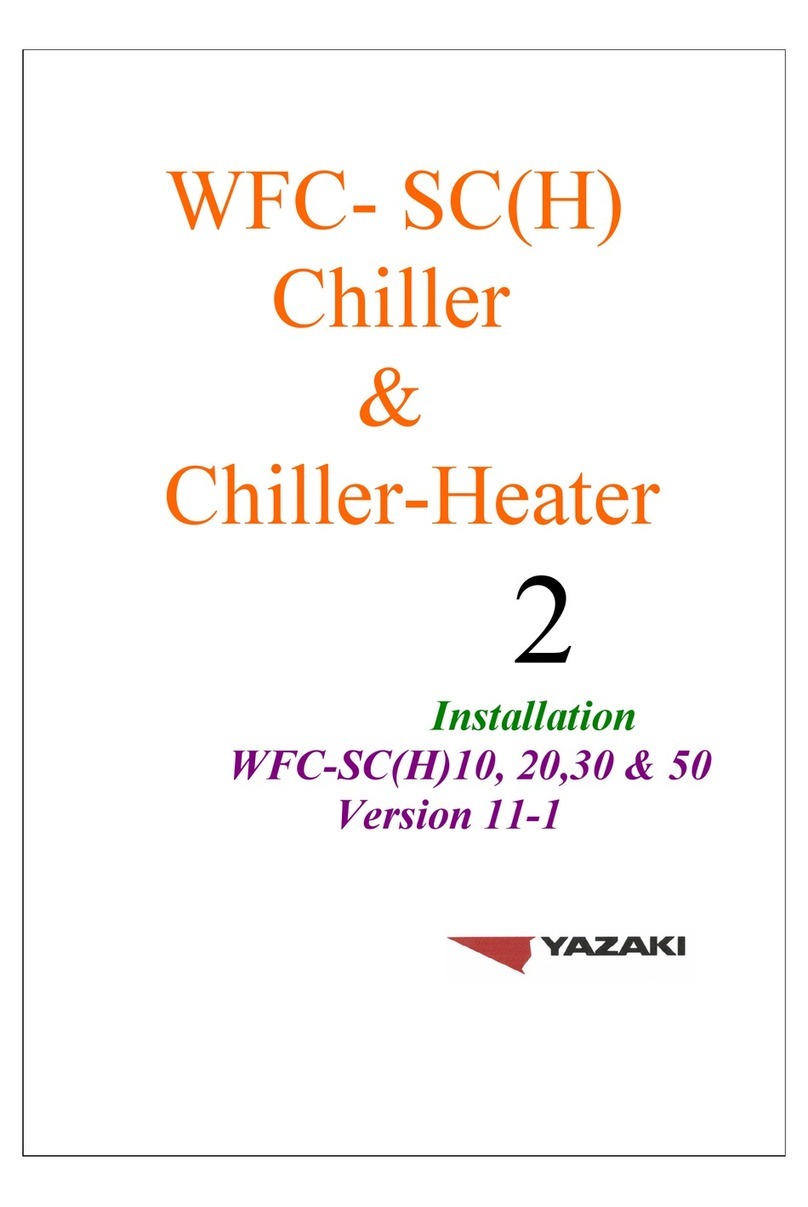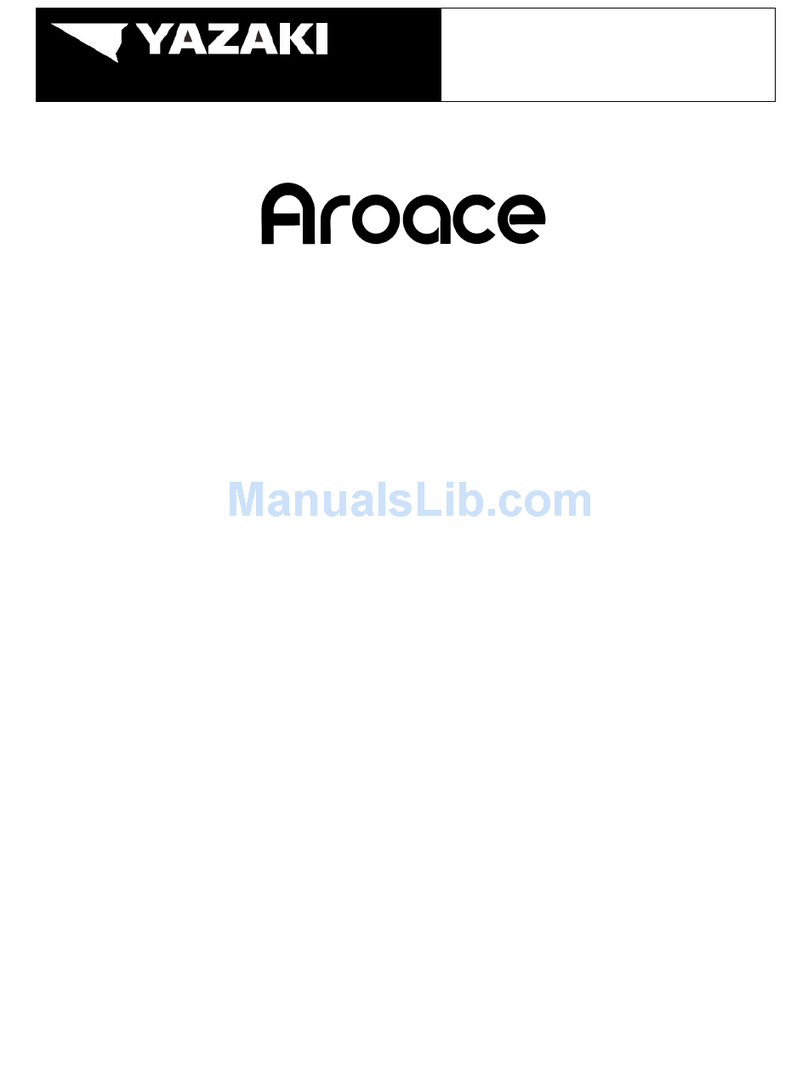
9
FOUNDATION
All aspects of foundation and support
computations must be in accordance with
national and local codes.
The chiller must be mounted on a
level, non-combustible foundation
capable of supporting the considerable
weight of the machinery. This is
particularly important for rooftop
installations. Always make certain the
structure can support not only the chiller,
but also the pumps, piping, cooling
towers, etc. as may be required. The
rooftop area should be well-drained and
be at least 7 feet (2 meters) from the edge
of the roof. Anti-fall measures should
always be taken if the chiller is installed
within 12 feet (4 meters) of the roof edge.
Additionally, for protection of the
roofing material, it is recommended a
suitable platform or walkway be provided
around all sides of the unit.
If the chiller is to be installed outside,
but at ground level, make certain the
concrete base and the soil beneath are
sufficient for the task. Settling over time
could cause the unit to become unlevel,
which could have a negative impact on
the performance and lifespan of the unit.
Concrete foundations are recommended
to be sized so that it extends at least 12”
(300 mm) beyond the unit in all directions
in order to accommodate potential
mounting and anchoring hardware.
Figure 6 –Foundation Detail
LEVELING
WFC-S Series units must be level in
order for the fluids to be distributed
properly over their respective tube
bundles. There is a level bar mounted
on the front of the main vessel of the
machine, right above the control box.
The unit must be level to both the
longitudinal and transverse alignments.
It is essential that all leveling be
completed before any piping connections
are attempted.
Leveling of the unit is typically
accomplished by use of field-supplied
metal shims. In cases where the unit is
required to be secured to the pad, anchor
bolts, nuts, and washers must be field-
supplied.
Figure 7 –Level Bar































